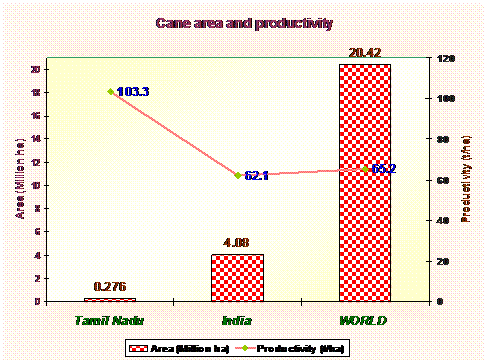AGR 301 :: Lecture 01 :: Importance, area, production and productivity of major cereals, pulses, oilseeds, sugar crops, medicinal and aromatics and forage crops
![]()
Importance of cereals
- Grains are generally classified as the seeds of cereal plants. They are characterized by their smallness, hardness and low water content.
- Most of them belong to the family of grasses, known scientifically as the family of gramineas.
- Most of Cereals have been the staple human diet from prehistoric times because of their wide cultivation, good keeping qualities, blend flavor and great variety.
- The cultivation of grains for human consumption was probably developed around 10,000 B.C. It signified the commencement of the era of stable civilization from the primitive unsettled nomadic life.
- Ground cereal converted into bread for meal revolved soon thereafter. Cereals have been modified and improved by centuries of cultivation and selective breeding.
Food Value of Grain Cereals
- The whole grains of all cereals have a similar chemical composition and nutritive value.
- They are classified as carbohydrate rich foods, for their average carbohydrate content is 70 per cent per 100 gm. They provide energy and also some protein which is usually of good quality. The protein content of grains varies from 11.8 per cent for wheat to 8.5 per cent for rice per 100 gm.
- Whole cereals are good sources of calcium and iron but they are totally devoid of ascorbic acid and practically devoid of vitamin A activity.
- Yellow maize is the only cereal containing appreciable amounts of carotene. Whole grain cereals also contain significant amounts of B group of vitamins.
- For a balanced diet, cereals should be supplemented by other proteins, minerals and vitamin A and C found in nuts, seeds, milk, fruits and fresh green vegetables.
- Whole grain cereals play an important role in the diet. It sprouted, they provide an increase in protein balance, as well as in all other nutrients, especially vitamin C.
- Their complex form of carbohydrate. When in the whole state, is valuable for
digestive needs, especially in providing excellent sources of vital fibre.
Importance of wheat
- World’s number one cereal in area
- Cultivation of wheat is as old as civilization
- It is the first mentioned crop in Bible
- Used for bread, cakes, bakeries, also manufacture of dextrose, alcohol etc
- A nutritious food of all
Wheat: Indian Scenario
State |
Area |
Production |
Productivity (kg/ha) |
UP |
9163.9 |
24073.8 |
2627 |
MP |
3692.8 |
5957.7 |
1613 |
Punjab |
3468 |
14493 |
4179 |
Rajasthan |
2123.9 |
5865.3 |
2762 |
Haryana |
2304 |
8857 |
3844 |
Bihar |
2003.7 |
3239 |
1617 |
All India |
26484 |
69354.5 |
2619 |
(Ministry of Agriculture, Govt. of India, 2005-06)
Area Expansion in wheat cultivation in India – In million
Year |
Area (ha) |
Production (t) |
Productivity (t) |
1950-51 |
9.75 |
6.45 |
0.66 |
1960-61 |
12.93 |
11.00 |
0.85 |
1967-68 |
15.00 |
16.54 |
1.10 |
1970-71 |
18.24 |
23.83 |
1.30 |
1980-81 |
22.28 |
36.31 |
1.63 |
1990-91 |
24.17 |
56.13 |
2.26 |
1998-99 |
27.40 |
70.78 |
2.58 |
Rabi season pulses
Cool season food legumes are
- Chickpea, Filedpea, Lentil, , Frenchbean,
- They contribute 60% world pulse production
- 28 million ha globally
- They are concentrated on temperate and sub-tropical climate
- Chickpea, lentil in developing countries
- Peas in developed countries

Global Pulse production
Demand for pulses in Tamil Nadu
Annual production : 1.77 l.t
Requirement for the projected population : 7.0 l.t
Import : 5.23 l.t
Countries : Australia, Myanmar,Canada, Turkey,France and Tanzania
Indian States : Maharashtra, A.P, Karnataka, Punjab and M.P
Importance of Oilseeds
India is the fourth largest oilseed producing country in the world
The major oilseeds are Soybean, Cottonseed, Groundnut, Sunflower, Rapeseed, Sesame seed, Copra, Linseed, Castor seed and Palm Kernels.
In India, oilseeds are grown in an area of nearly 27 million hectares across the length and breadth of the country.

World Oilseed Production
Importance of sugar crops
- In addition to providing the source for the manufacture of sugar, sugar crops are used to produce alcohol and ethanol.
- In certain countries, sugar cane is eaten raw in minor quantities.
- It also is used in the preparation of juices and for animal feed.
- There are two major sugar crops: sugar beets and sugar cane. However, sugar and syrups are also produced from the sap of certain species of maple trees, from sweet sorghum when cultivated explicitly for making syrup and from sugar palm.
- Sugar beets that are cultivated solely as a fodder crop and are classified as vegetable crops
- Sugar cane is a perennial grass that is cultivated mainly in the tropics.
- Sugar beet is an annual crop that is propagated by the seeds of the flowers, cultivated in cooler climates than sugar cane
- Both sugar beets and sugar cane have high water content, accounting for about 75 percent of the total weight of the plants. The sugar content of sugar cane ranges from 10 to 15 percent of the total weight, while that of sugar beets is between 13 and 18 percent.
- The traditional sources of sugar are sugar cane and sugar beets.

Importance of medicinal and aromatic crops
contribution to the development of ancient Indian medicine.
- One of the earliest treatises on Indian medicine the Charak Samhita (1000 B.C), records
the use of over 340 drugs of vegetable origin.
- Medicinal and aromatic plants are important for human health. These plants have been used from the prehistoric times to present day. These plants based medicines are consumed in all civilizations.
- It is believed that the herbal medicine can give good effect to body without causing side effects to human’s life. Besides, the usage of medical plants has been increasing as an important role that can support the economic system.
- The medical and aromatic plants for health are used as herbal treatments and therapies that can be new habits for culture.
- With the high consumption of medical plants, it is possible that the over exploitation of such plants could be happen.
- Some of the medicinal plants can be cultivated well in a research centre, agricultural site or even in a house. But for the wild medical plants, it needs to be more concerned to avoid the over cropped and keep the sustainability of the medical and aromatic plants.
Importance of forage crops
India is basically an agricultural country and about 70 per cent of its people live in villages. Their livelihood is dependent mainly on agriculture and animal husbandry. Though India has a huge livestock population of over 582 million, besides poultry, production of milk and other livestock products are the lowest compared to the production in the world.
Livestock population in India
S. No. |
Livestock |
Population (million) |
1. |
Cattle |
245.73 |
2. |
Buffalo |
109.44 |
3. |
Sheep |
79.78 |
4. |
Goat |
125.60 |
5. |
Pig |
18.23 |
6. |
Others |
3.79 |
7. |
Poultry |
459.96 |
Total |
582.61 |
|
Balance-sheet of animal feed and fodder in India
Feed & fodder |
Availability (m.t) |
Requirement (m.t) |
Deficit (m.t) |
Green fodder |
224.08 |
611.99 |
387.91 |
Crop residues |
231.05 |
869.79 |
638.74 |
Concentrates |
31.60 |
65.40 |
81.80 |
It is seen from the Table, that there is a huge gap between demand and supply of all kinds of feeds and fodders.
On the other hand, the land resources available for growing fodder and forage crops, it is estimated that the average cultivated area devoted to fodder production is only 4.4 per cent of the total area. Similarly, the area under permanent pastures and cultivable wastelands is approximately 13 and 15 million hectares respectively. Likewise, the total area under forests is 2.51 crore hectares and that open to grazing is 2.1 crore hectares. All these resources are able to meet the forage requirements of the grazing animals only during the monsoon season. But for the remaining periods of the year, the animals have to be maintained on the crop residues or straws of jowar, bajra, ragi, wheat, barley, sugarcane trash etc. either in the form of whole straw or bhusa, supplemented with some green fodder, or as sole feed.
To attain the goal of rearing hybrid cows, feeding them with nutritious fodder is the most important aspect. Nutritious feed improves the health of the animal. In order to improve the quality and quantity of forage in India, location specific fodder varieties and species have been identified and also developed suitable cultivation technology for economic production.
One of the agriculture most limiting resources is water. A huge quantity of waste water (Effulent, sewage) is available. Identification of optimum forage production strategies for recycling water and plant nutrients along with monitoring of fodder quality, antinutritional/toxic principles and heavy metals will not only help to promote forage production but also prevent pollution hazard.
Multiple choice questions
- The most cultivated crop in India among cereals
a. Rice b. Wheat c. Maize - World production of wheat is __________ million tonnes
a. 578.34 b. 478.34 c. 678.34 - ___________ leads as highest productivity of wheat in the world
a. India b. USA c. China - 70% of area and 75% of the production of groundnut in India is in
a. A.P b. Tamil Nadu c. Both - Production of wheat is __________ million tonnes in India
a. 71 b. 81 c. 61 - Highest productivity of wheat is in ________ state of India
a. Tamil Nadu b. Punjab c. Maharastra - In India, productivity of sugarcane is highest in the state
a. Tamil Nadu b. Punjab c. None - Mention the Rabi season pulse
a. Chick pea b. Green gram c. Red gram
| Download this lecture as PDF here |
![]()